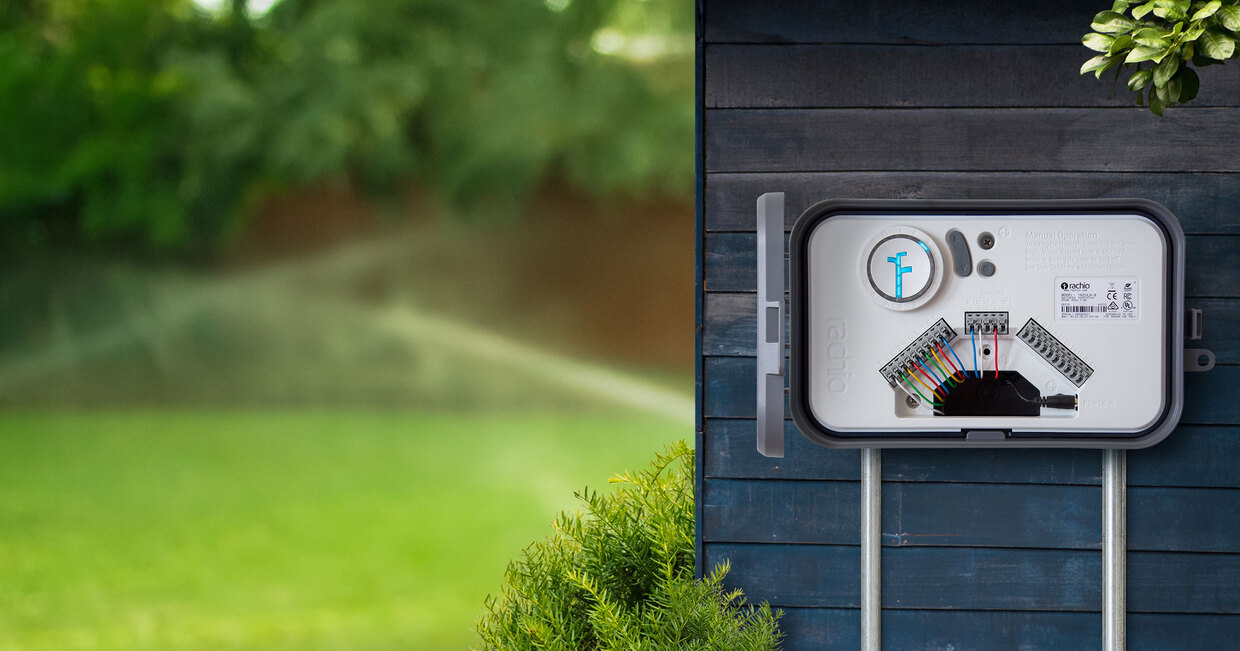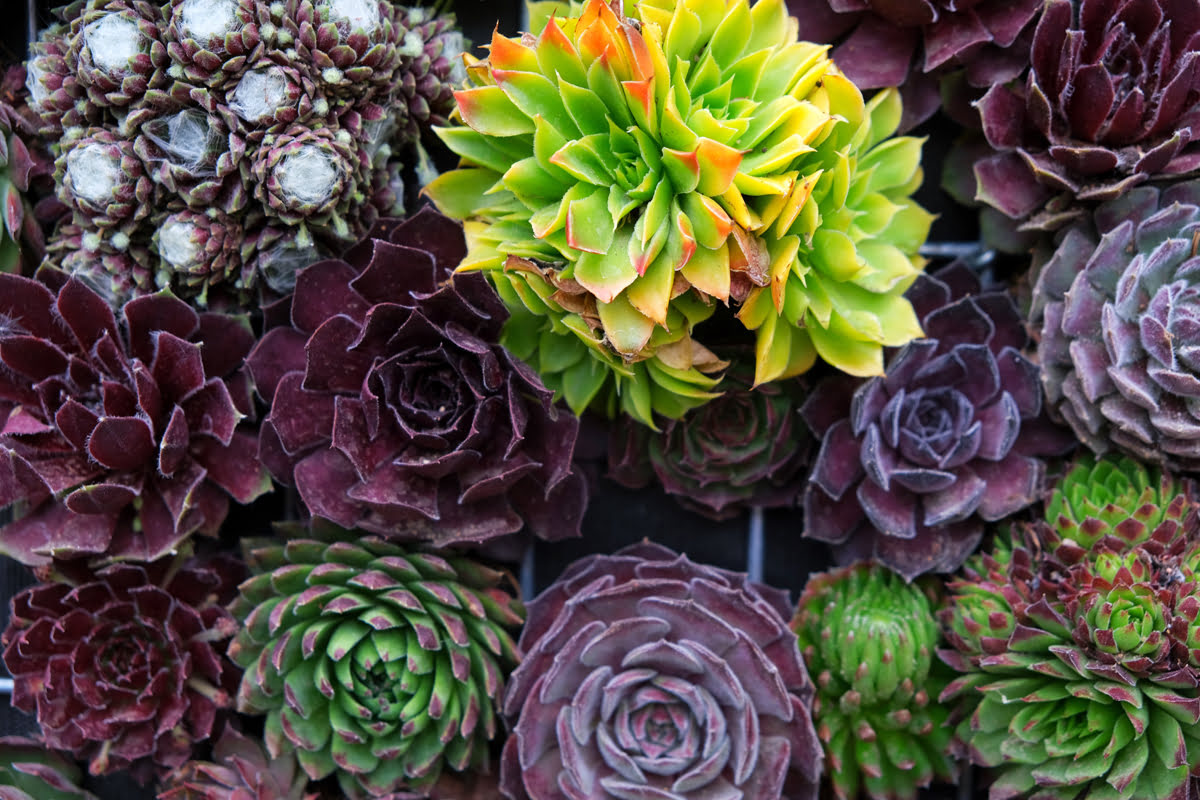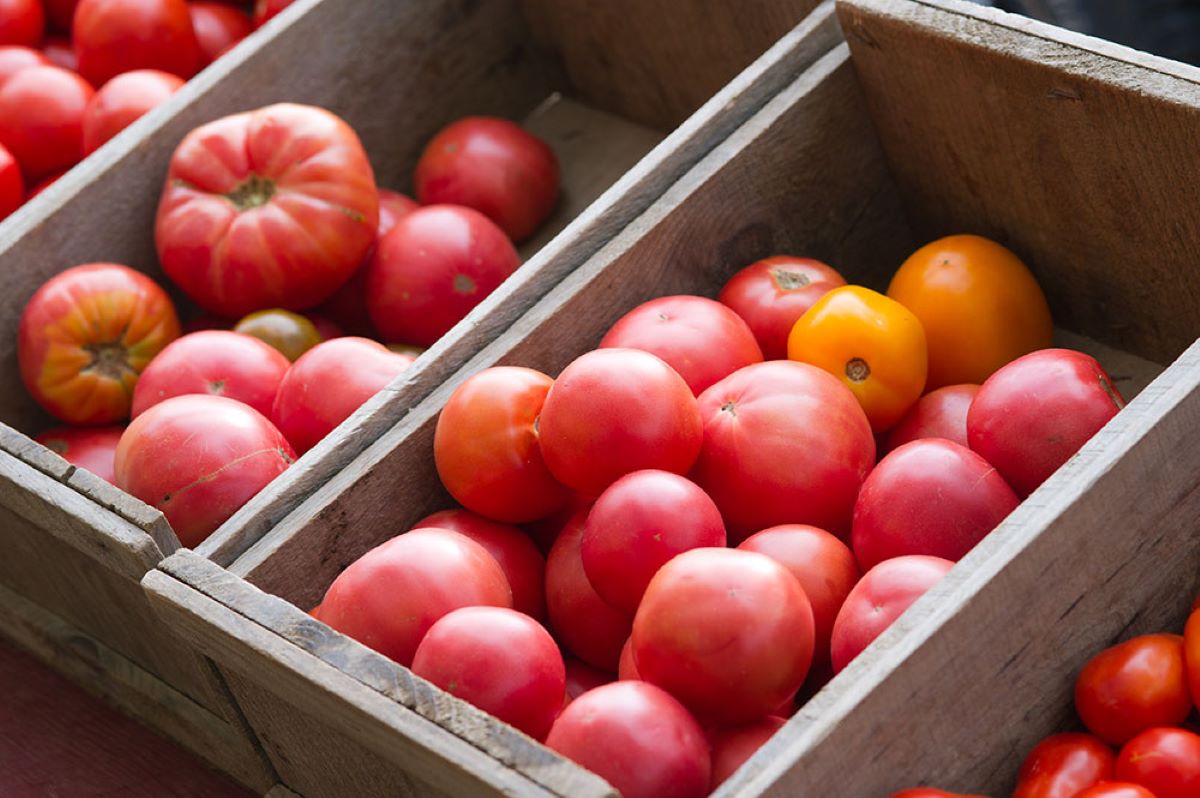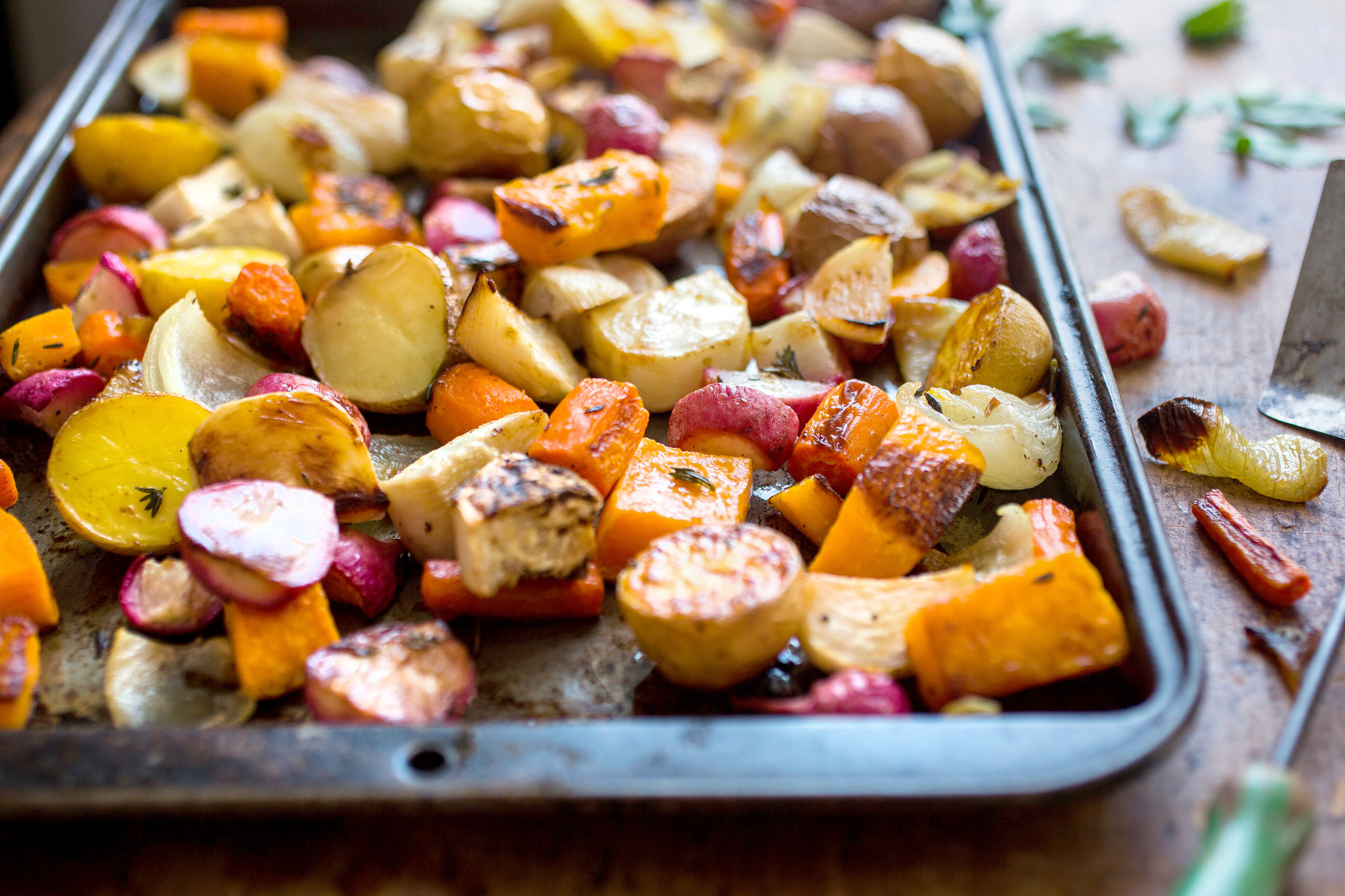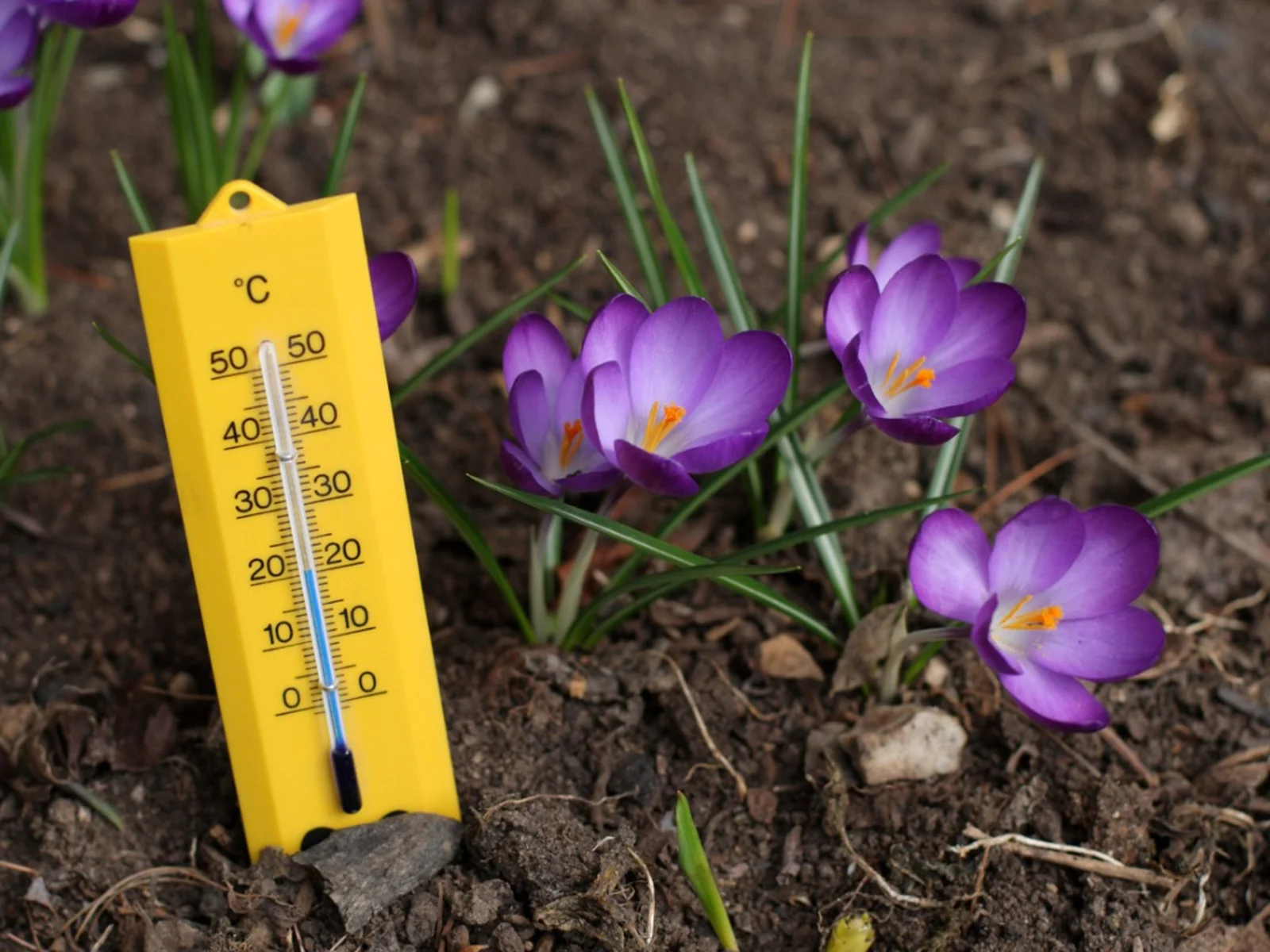Home>Gardening Tips and Tricks>Eco-Friendly Gardening>How To Control Temperature In A Greenhouse


Eco-Friendly Gardening
How To Control Temperature In A Greenhouse
Modified: January 22, 2024
Learn how to control temperature in your greenhouse with eco-friendly gardening techniques. Create the perfect environment for your plants to thrive and maximize your yields.
(Many of the links in this article redirect to a specific reviewed product. Your purchase of these products through affiliate links helps to generate commission for Chicagolandgardening.com, at no extra cost. Learn more)
Table of Contents
- Introduction
- Benefits of Temperature Control in a Greenhouse
- Factors Affecting Greenhouse Temperature
- Understanding Optimal Temperature Ranges for Different Crops
- Common Methods for Controlling Temperature in a Greenhouse
- Natural Ventilation Techniques
- Shade and Cooling Techniques
- Insulation and Heating Methods
- Automation and Technology for Temperature Control
- Important Considerations for Effective Temperature Management
- Conclusion
Introduction
Welcome to the world of eco-friendly gardening! Gardening is not just about beautifying your surroundings; it’s about nurturing the earth and promoting sustainability. And when it comes to creating a thriving garden, one important aspect to consider is temperature control, especially in a greenhouse.
A greenhouse provides an ideal environment for plants to grow and thrive, regardless of the outdoor climate. However, maintaining the right temperature within a greenhouse is crucial for the health and productivity of your plants. Whether you’re an experienced gardener or a beginner, understanding how to control temperature in a greenhouse is essential for successful gardening.
Proper temperature control offers a myriad of benefits for your plants. It creates an optimal growing environment that encourages healthy growth, stronger roots, and higher yields. Maintaining the right temperature also helps prevent pests and diseases, as certain insects and pathogens thrive in specific temperature ranges.
Furthermore, regulating temperature in a greenhouse allows you to extend the growing season by providing warmth during colder months, enabling year-round gardening. It also offers the flexibility to grow a wider range of plant varieties that may not be well-suited to your local climate.
However, achieving and maintaining the ideal temperature in a greenhouse can be challenging, as it depends on various factors. These factors include the outside temperature and climate, greenhouse size and design, types of plants being grown, and the specific stage of plant growth.
In this comprehensive guide, we will explore the various methods and techniques for controlling temperature in a greenhouse. From natural ventilation techniques to insulation and heating methods, we will cover everything you need to know to create an optimal environment for your plants. So let’s dive in and uncover the secrets to successful temperature management in a greenhouse!
Benefits of Temperature Control in a Greenhouse
Temperature control is vital for the health and productivity of plants in a greenhouse. By maintaining the optimal temperature range, you can enjoy a multitude of benefits, enhancing the overall success of your gardening endeavors.
1. Enhanced Plant Growth: When plants are exposed to the ideal temperature range, they can grow at an accelerated pace. Controlled temperatures promote photosynthesis, which is essential for plants to produce energy through the absorption of light. This results in faster growth, increased biomass, and overall healthier plants.
2. Extended Growing Season: By controlling the temperature in a greenhouse, you can extend the growing season beyond the limitations imposed by the outdoor climate. This means you can start planting earlier in the spring and continue harvesting later in the fall or even throughout the year. This opens up opportunities to experiment with a wider range of crops and enjoy a continuous supply of fresh produce.
3. Protection from Extreme Weather: Greenhouses provide a protective shield against extreme weather conditions such as frost, strong winds, heavy rains, or intense heat. By regulating the temperature inside, you can shield your plants from these harsh elements and prevent damage or even loss of crops. This is especially beneficial in regions with unpredictable weather patterns.
4. Pest and Disease Prevention: Many pests and diseases thrive in specific temperature ranges. By carefully controlling the temperature in your greenhouse, you can create an environment that discourages the growth and development of these unwanted visitors. This reduces the risk of infestations and helps to maintain the overall health of your plants.
5. Increased Crop Yields: With temperature-controlled conditions, plants can reach their full potential, resulting in higher crop yields. By optimizing the temperature, you provide the ideal conditions for plants to produce flowers, fruits, and vegetables. This means a greater quantity and higher quality harvest for you to enjoy.
6. Energy Efficiency: While it may require some investment upfront, implementing temperature control measures in your greenhouse can lead to long-term energy efficiency. By utilizing insulation, ventilation, and heating methods, you can reduce the energy required to maintain the desired temperature, thus lowering your greenhouse’s energy consumption and costs.
Ultimately, by prioritizing temperature control in your greenhouse, you will create an environment that maximizes plant growth, optimizes harvest yields, and provides a consistent and sustainable gardening experience throughout the year. So, let’s explore the different factors that influence greenhouse temperature and how to effectively manage them.
Factors Affecting Greenhouse Temperature
Several factors influence the temperature inside a greenhouse. Understanding and managing these factors is essential for maintaining an optimal growing environment for your plants.
1. Sunlight and Solar Radiation: Sunlight is a primary source of heat for a greenhouse. The amount of sunlight received and the angle at which it enters the greenhouse directly affect the temperature inside. The season, time of day, and geographic location all play a role in determining the intensity and duration of sunlight. It is important to consider these factors when designing and positioning your greenhouse to take advantage of sunlight while preventing excessive heat buildup.
2. Ventilation and Air Circulation: Adequate ventilation plays a critical role in controlling greenhouse temperature. Proper airflow helps regulate temperature by removing excess heat, humidity, and carbon dioxide, preventing stagnant air and the buildup of fungal diseases. Well-placed vents, windows, and fans facilitate the movement of air, allowing for efficient temperature control.
3. Insulation: Greenhouses need insulation to prevent heat loss during colder periods and to reduce the impact of excessive heat during warmer months. Insulation materials such as double-glazed windows, thermal curtains, or bubble wrap are effective in retaining heat within the greenhouse, especially during the night. Proper insulation ensures stable and consistent temperatures, helping plants thrive.
4. Geographical Location: The geographic location of your greenhouse significantly influences its temperature. Different regions experience varying climates, with variations in temperature, humidity, and sunlight intensity. Understanding your local climate and its seasonal patterns is crucial for implementing appropriate temperature control strategies.
5. Irrigation and Moisture Management: Water has the ability to absorb and retain heat, affecting the overall temperature in the greenhouse. Proper irrigation practices and moisture management are necessary to prevent excess humidity and moisture buildup. By maintaining the right moisture levels, you can help regulate the temperature and reduce the risk of fungal diseases caused by excessive humidity.
6. Thermal Mass: The thermal mass of greenhouse materials, such as concrete, stone, or water barrels, can influence the temperature inside. These materials absorb and store heat during the day and release it slowly at night, providing a buffer against temperature fluctuations. Utilizing thermal mass strategically can help maintain more stable temperatures in the greenhouse.
7. Size and Design of the Greenhouse: The size and design of your greenhouse impact its temperature regulation. Larger greenhouses may have more variations in temperature, requiring additional temperature control measures. Factors such as the orientation, shape, and shading elements in the greenhouse design also affect temperature distribution and the amount of sunlight received.
By considering and managing these factors, you can create a greenhouse environment that promotes optimal plant growth and productivity. Now that we understand the factors influencing greenhouse temperatures, let’s explore the optimal temperature ranges for different types of crops.
Understanding Optimal Temperature Ranges for Different Crops
Every plant has specific temperature requirements for optimal growth and development. Understanding the preferred temperature ranges for different crops is key to ensuring successful greenhouse gardening. Here are some general guidelines for common crops:
1. Cool-Season Crops: Cool-season crops such as lettuce, spinach, kale, and radishes thrive in cooler temperatures, typically between 40°F (4°C) and 70°F (21°C). They can tolerate mild frost and perform best when temperatures remain consistently cool. These crops often bolt or become bitter-tasting in high temperatures, so it’s essential to provide adequate cooling measures during warmer periods.
2. Warm-Season Crops: Warm-season crops include tomatoes, peppers, cucumbers, and melons. They prefer temperatures ranging from 70°F (21°C) to 85°F (29°C) for optimal growth. These crops are more sensitive to cold temperatures, so it’s crucial to provide heating during cooler periods and protect them from potential frost.
3. Herbs: Different herbs have varying temperature preferences. For example, basil and parsley prefer temperatures between 60°F (15°C) and 80°F (27°C), while rosemary and thyme can tolerate slightly cooler temperatures between 50°F (10°C) and 70°F (21°C). Understanding the specific requirements of each herb will help you provide the ideal temperature conditions for their growth.
4. Flowers: Flowers such as petunias, pansies, and marigolds prefer temperatures between 55°F (13°C) and 75°F (24°C). However, there are variations among different flower species, so it’s important to research the optimal temperature ranges for the specific flowers you plan to grow.
5. Tropical Crops: Tropical crops like tropical fruits and orchids require warmer temperatures, typically between 75°F (24°C) and 95°F (35°C). These crops may need supplemental heating during colder months or in regions with colder climates to maintain their preferred temperature range.
It’s important to note that these temperature ranges are general guidelines, and there may be variations depending on the cultivar, specific growing conditions, and stage of plant growth. Monitoring temperature fluctuations and making necessary adjustments are essential for providing an ideal environment for your crops.
Additionally, some crops may benefit from temperature fluctuations, such as specific flowering plants that require cooler temperatures to initiate bud formation. Researching the specific temperature requirements for the crops you intend to cultivate will help you optimize their growth.
By understanding the optimal temperature ranges for different crops, you can adjust your greenhouse’s temperature control methods to meet the specific requirements of your plants. In the next section, we will explore common methods for controlling temperature in a greenhouse.
Common Methods for Controlling Temperature in a Greenhouse
Controlling temperature in a greenhouse requires a combination of techniques to maintain the ideal climate for plant growth. Here are some common methods used to regulate temperature:
1. Natural Ventilation: Natural ventilation is a cost-effective and efficient way to control temperature in a greenhouse. It involves strategically placed vents, windows, and doors to allow for the flow of air. By opening these openings, warm air can escape while cool air enters, helping to reduce excessive heat buildup. The positioning and size of vents should be carefully considered to ensure proper air circulation.
2. Shade Cloth: Installing shade cloth is an effective method to control temperature by reducing the amount of direct sunlight reaching the plants. Shade cloth comes in different densities, providing varying degrees of shading. By placing shade cloth over the greenhouse or specific crops during hot periods, you can prevent overheating and reduce the risk of sunburn or heat stress on plants.
3. Evaporative Cooling: Evaporative cooling utilizes water evaporation to bring down the temperature inside a greenhouse. This method involves the use of misting or fogging systems to disperse fine water droplets, which evaporate and cool the air. Evaporative cooling is particularly effective in dry climates as it increases humidity while reducing temperature.
4. Insulation: Insulation plays a crucial role in maintaining temperature stability within a greenhouse. Insulating materials such as double-layered polyethylene film, bubble wrap, or thermal curtains can help retain heat during colder periods and prevent excessive heat buildup during warmer periods. Insulating the walls, roof, and even the floor can reduce energy loss and improve overall temperature control.
5. Heating Systems: During colder months or in regions with chilly climates, heating systems are essential to maintain the desired temperature range. Common heating options include gas or electric heaters, hot water systems, or even radiant floor heating. It’s important to choose a heating system suitable for the size of your greenhouse and the specific temperature requirements of your crops.
6. Automated Climate Control: Advancements in greenhouse technology have led to the development of automated climate control systems. These systems use sensors to monitor temperature, humidity, and other environmental factors, and automatically adjust ventilation, shading, and heating mechanisms accordingly. Automated climate control ensures precise and consistent temperature regulation, minimizing manual intervention.
7. Thermal Screens: Thermal screens are installed within a greenhouse to create a barrier that reflects or traps heat, reducing heat loss during colder periods and preventing excessive heat gain. These screens are typically made from reflective material and can be adjusted to allow for different levels of lighting and shading. Thermal screens are especially useful in larger greenhouses where temperature control may be more challenging.
By combining these temperature control methods based on the specific needs of your greenhouse and crops, you can maintain a stable and optimal growing environment. Experimentation and monitoring are key to finding the right balance and achieving successful temperature regulation.
In the next section, we will discuss additional techniques for natural ventilation and shade to aid in temperature control.
Natural Ventilation Techniques
Natural ventilation is a key component of temperature control in a greenhouse. It involves the strategic placement of vents, windows, and doors to facilitate the flow of air. By harnessing natural airflow, you can regulate temperature and humidity levels, ensuring a conducive environment for plant growth. Here are some effective natural ventilation techniques:
1. Roof Vents: Roof vents are commonly used in greenhouses to allow hot air to rise and escape. They are typically positioned at the highest point of the greenhouse to take advantage of the natural buoyancy of warm air. When opened, roof vents create a chimney effect, drawing cooler air into the greenhouse from lower openings.
2. Side Vents: Side vents are located at the lower sections of the greenhouse’s walls. These vents allow cooler air to enter while allowing warm air to escape through roof vents or other openings. By strategically adjusting the size and positioning of side vents, you can regulate the airflow and temperature distribution within the greenhouse.
3. Louvered Windows: Louvered windows are windows with slats that can be opened or closed to control the flow of air. They can be placed along the sides or roof of the greenhouse and offer flexibility in adjusting the ventilation. Louvered windows are particularly effective in areas with strong winds, as they allow for air circulation while minimizing direct wind impact on plants.
4. Roll-Up Sidewalls: Roll-up sidewalls are a practical solution for natural ventilation in greenhouses. These walls can be rolled up or down to increase or decrease the openings along the sides of the greenhouse. By adjusting the height of the roll-up sidewalls, you can control the amount of air circulation and temperature within the greenhouse.
5. Insect Screens: In addition to facilitating airflow, natural ventilation techniques should also take into consideration the need to keep pests out. Installing insect screens on vents and openings helps to prevent insects from entering the greenhouse while still allowing for adequate airflow. These screens provide an effective barrier against pests without compromising ventilation.
It is important to note that the effectiveness of natural ventilation techniques depends on several factors, such as the prevailing wind direction, the design and layout of the greenhouse, and the specific climate conditions. Regular monitoring, observation, and adjustment of the ventilation system are necessary to ensure efficient airflow and temperature control.
By incorporating natural ventilation techniques into your greenhouse design and management, you can maintain a healthy and balanced environment for your plants. In the next section, we will explore shading and cooling techniques that can further assist in controlling greenhouse temperature.
Shade and Cooling Techniques
Shading and cooling techniques are vital for controlling temperature in a greenhouse, especially during hot and sunny periods. Excessive heat can limit plant growth and even lead to heat stress or sunburn. Here are some effective shade and cooling techniques to help maintain optimal temperature levels:
1. Shade Cloth: Installing shade cloth is a simple and effective way to reduce the intensity of sunlight reaching the plants. Shade cloth comes in different densities, allowing you to adjust the amount of shade provided. By covering the greenhouse or specific crops with shade cloth, you can protect plants from direct sunlight and minimize overheating.
2. White Wash: White washing involves applying a thin layer of diluted white paint or calcium carbonate solution to the greenhouse glazing. This technique reflects sunlight and reduces the amount of heat transmitted into the greenhouse. White wash can be applied at the beginning of hot seasons and reapplied as needed.
3. Drip Irrigation and Misting Systems: Drip irrigation and misting systems are not only effective for irrigation but also for cooling the greenhouse environment. By spraying a fine mist of water, you can create evaporative cooling, which reduces the temperature and increases humidity. These systems are particularly beneficial in dry climates or during periods of intense heat.
4. Wet Pads and Evaporative Cooling: Wet pads or evaporative cooling walls are installed on one side of the greenhouse and connected to a water source. As air passes through the wet pads, it becomes cooled through evaporation, providing a refreshing atmosphere for plants. This method is effective in arid climates where high humidity can be beneficial.
5. Ventilation Fans: Including ventilation fans in your greenhouse setup can greatly assist in cooling the air. Fans help improve air circulation and create a wind-like effect that aids in dissipating excess heat. Strategic placement of fans near vents or windows can optimize airflow and temperature control.
6. Cool Roof Materials: Roof material plays a significant role in heat absorption. Opting for reflective or lighter-colored roofing materials can help reduce heat buildup in the greenhouse. These materials reflect a higher percentage of sunlight, preventing excessive heating of the interior space.
Always monitor the temperature inside the greenhouse to determine which shading and cooling techniques are most effective and adjust them accordingly. Additionally, consider using a combination of methods to achieve the desired results.
Remember, the specific shading and cooling techniques you choose will depend on factors such as the specific crops being grown, local climate conditions, and the design of your greenhouse. By implementing these techniques, you can create a comfortable growing environment for your plants and ensure their optimal health and productivity.
Now that we’ve explored shade and cooling techniques, let’s delve into insulation and heating methods that can help regulate temperature in a greenhouse.
Insulation and Heating Methods
Insulation and heating methods are essential for maintaining a stable and optimal temperature inside a greenhouse, especially during colder periods. Proper insulation helps retain heat, while heating systems provide additional warmth when necessary. Here are some common insulation and heating methods:
1. Insulating Materials: Insulation plays a crucial role in preventing heat loss and regulating temperature fluctuations. Double-layered polyethylene film, bubble wrap, or thermal curtains can be used to insulate the greenhouse. These materials create a barrier that helps retain heat during colder periods and reduce excessive heat buildup during warmer periods. Insulation should be applied to the walls, roof, and even the floor to improve overall temperature control.
2. Thermal Mass: Utilizing thermal mass within the greenhouse can help regulate temperature variations. Materials such as concrete, stone, or water barrels have high heat retention properties. By placing thermal mass items strategically throughout the greenhouse, they can absorb and store heat during the day and release it slowly at night, creating a more stable temperature environment.
3. Heating Systems: Heating systems are crucial for maintaining optimal temperatures in the greenhouse, especially in colder climates. Common heating options include gas or electric heaters, hot water systems, or radiant floor heating. It’s important to choose a heating system suitable for the size of your greenhouse, as well as the specific temperature requirements of your plants.
4. Geothermal Heating: Geothermal heating is an energy-efficient method that utilizes the earth’s natural heat. This system involves tapping into underground temperatures to provide continuous, sustainable heating for the greenhouse. Geothermal heat pumps transfer heat between the ground and the greenhouse, effectively regulating temperature and reducing energy consumption.
5. Radiant Heating: Radiant heating involves the use of radiant tubes or panels that release heat directly into the greenhouse. This method is efficient and provides even heating. Radiant heating systems can be fueled by gas, oil, or electricity, and can be easily customized to suit the specific needs of your greenhouse.
6. Natural Sunlight: While insulation and heating systems are crucial, natural sunlight remains a significant factor in maintaining temperature. Maximizing the amount of sunlight that enters the greenhouse during the day is essential for plant growth. Effective positioning of the greenhouse, proper cleaning of the glazing material, and removal of any obstructions that may block sunlight are key to optimizing natural heating.
Consider the specific needs of your greenhouse and crops when selecting insulation and heating methods. Monitoring and adjusting the temperature regularly will help ensure a suitable environment for your plants. Combining insulation and heating methods with other temperature control techniques can create a well-regulated and comfortable space for plant growth.
Now that we’ve covered insulation and heating methods, let’s explore automation and technology that aid in temperature control for greenhouses.
Automation and Technology for Temperature Control
Automation and technology have revolutionized the way we control temperature in greenhouses. These advancements offer precise and efficient solutions that help maintain optimal growing conditions. Here are some automation and technology options for temperature control:
1. Climate Control Systems: Climate control systems use sensors and computerized controllers to monitor and regulate temperature, humidity, ventilation, and other environmental factors in real-time. These systems can automatically adjust vents, fans, shading, and heating to maintain the desired conditions. Some advanced systems can even be operated remotely, allowing for convenient monitoring and adjustments.
2. Environmental Sensors: Environmental sensors play a crucial role in automated temperature control. These sensors measure various factors such as temperature, humidity, CO2 levels, and light intensity. The data collected by these sensors is used to initiate automated actions, such as adjusting ventilation, shading, or heating systems, to maintain the optimal conditions for plant growth.
3. Internet of Things (IoT) Integration: IoT technology enables greenhouse operators to have remote access and control over their temperature control systems. Connected devices and sensors can be monitored and controlled from anywhere using a computer or mobile device. This allows for real-time adjustments and data analysis, ensuring precise temperature management even when outside the greenhouse.
4. Automated Ventilation Systems: Automated ventilation systems are used to control airflow into and out of the greenhouse. These systems are equipped with sensors that monitor temperature, humidity, and CO2 levels. Based on the predefined settings, the ventilation system can automatically adjust the openings, vents, and fans to maintain optimal temperature and air quality.
5. Curtain Systems: Curtain systems are automated fabric screens that can be deployed to regulate temperature and light intensity. These curtains can be adjusted to control the amount of sunlight and heat entering the greenhouse. They are particularly useful for larger greenhouses where manual shading may be challenging.
6. Energy-Saving Technologies: Technology advancements have also led to the development of energy-saving solutions for temperature control. These may include energy-efficient heaters, insulation materials with higher R-values, and smart thermostats that optimize heating cycles. Energy-saving technologies not only reduce operational costs but also contribute to a greener and more sustainable greenhouse operation.
By embracing automation and technology for temperature control, greenhouse operators can achieve precise and consistent results, optimize resource usage, and reduce manual intervention. As technology continues to evolve, more innovative solutions are being developed to help greenhouse growers create the ideal growing environment.
In summary, incorporating automation and technology into greenhouse temperature control can elevate the efficiency and precision of temperature management, leading to healthier plants and increased productivity. Now, let’s consider some additional important considerations for effective temperature management in a greenhouse.
Important Considerations for Effective Temperature Management
Effective temperature management in a greenhouse requires careful attention to various factors. Consider the following considerations to ensure optimal temperature control:
1. Crop Specific Needs: Different crops have specific temperature requirements. Understanding the preferred temperature ranges of the plants you are growing is essential for effective temperature management. Research the specific needs of your crops and adjust temperature control accordingly to provide the best growing conditions.
2. Seasonal Variations: Temperature requirements vary throughout the year. Consider the seasonal changes and adjust your temperature control strategies accordingly. You may need to implement different techniques during the colder winter months compared to the warmer summer months.
3. Temperature Monitoring: Regularly monitor the temperature inside the greenhouse to ensure it remains within the desired range. Place temperature sensors at different locations to get a comprehensive understanding of the temperature distribution. This data will help you make informed adjustments to your temperature control methods as needed.
4. Ventilation Management: Proper ventilation is crucial for temperature control. Monitor and adjust vents, windows, and fans to provide optimal airflow. Pay attention to prevailing wind directions and plan the positioning of vents accordingly to maximize air circulation and minimize temperature variations.
5. Humidity Control: Humidity plays a vital role in temperature management. High humidity can lead to excessive moisture and promote the growth of pests and diseases, while low humidity can cause plant stress. Monitor and manage humidity levels using ventilation, misting systems, or dehumidifiers to create an environment that balances moisture and temperature.
6. Weather Awareness: Stay informed about weather forecasts and be prepared to make necessary adjustments to your temperature control methods. Extreme heatwaves, cold snaps, or sudden weather changes can impact the temperature inside the greenhouse. Stay vigilant and be ready to implement additional cooling or heating measures when required.
7. Energy Efficiency: Seek energy-efficient temperature control solutions to reduce operational costs and minimize the environmental impact of your greenhouse. Invest in well-insulated structures, energy-efficient heaters, and automated systems that optimize resource usage. This not only benefits your bottom line but also contributes to sustainable and eco-friendly gardening practices.
8. Regular Maintenance: Ensure regular maintenance of your temperature control systems. Clean vents, replace filters, and lubricate moving parts to ensure optimal performance. Regular inspections and preventive maintenance help identify and address issues that may affect temperature control efficiency.
By considering these important factors, you can achieve effective temperature management in your greenhouse. Remember to continually assess and adjust your strategies to meet the changing needs of your plants and environmental conditions.
Now that we’ve explored these considerations, you have the knowledge and tools to effectively manage temperature in your greenhouse and provide the ideal environment for your plants to thrive.
Conclusion
Eco-friendly temperature control in a greenhouse is crucial for promoting healthy plant growth, extending the growing season, and maximizing productivity. By implementing effective temperature management techniques, you can create an optimal environment for your plants to thrive.
We started by understanding the benefits of temperature control in a greenhouse, including enhanced plant growth, extended growing seasons, and increased crop yields. We also discussed the factors that affect greenhouse temperature, such as sunlight, ventilation, insulation, and geographical location.
Understanding the optimal temperature ranges for different crops is key to successful greenhouse gardening. Cool-season and warm-season crops have varying temperature requirements, and proper temperature control ensures their optimal growth and productivity. Additionally, we explored common methods for controlling temperature, such as natural ventilation, shade and cooling techniques, insulation, and heating methods.
Automation and technology play a significant role in greenhouse temperature control. Climate control systems, environmental sensors, and IoT integration enable precise monitoring and adjustment of temperature and other environmental factors. These advancements provide greenhouse operators with efficient and sustainable temperature management solutions.
We also discussed important considerations for effective temperature management, including crop-specific needs, seasonal variations, ventilation management, humidity control, weather awareness, energy efficiency, and regular maintenance. These factors help ensure that temperature control strategies adapt to changing conditions and provide the best possible environment for plant growth.
In conclusion, incorporating eco-friendly temperature control measures in your greenhouse gardening practices is essential for creating a thriving and sustainable gardening experience. By prioritizing temperature management, you can optimize plant growth, increase harvest yields, and contribute to a greener and more eco-friendly gardening practice.
Now armed with the knowledge and techniques for temperature control in a greenhouse, it’s time to apply these principles to your own gardening endeavors and watch your plants flourish in their ideal environment.
